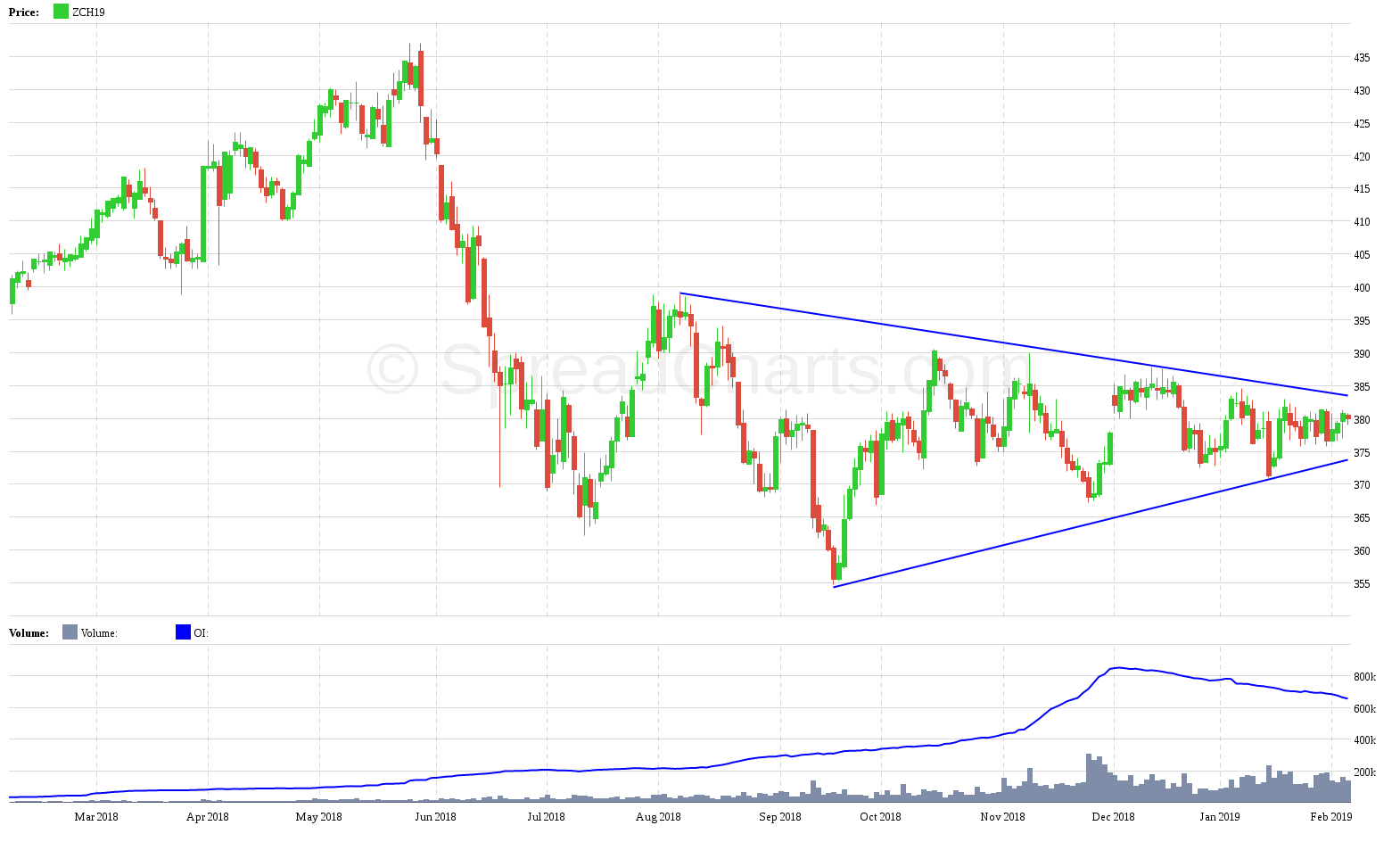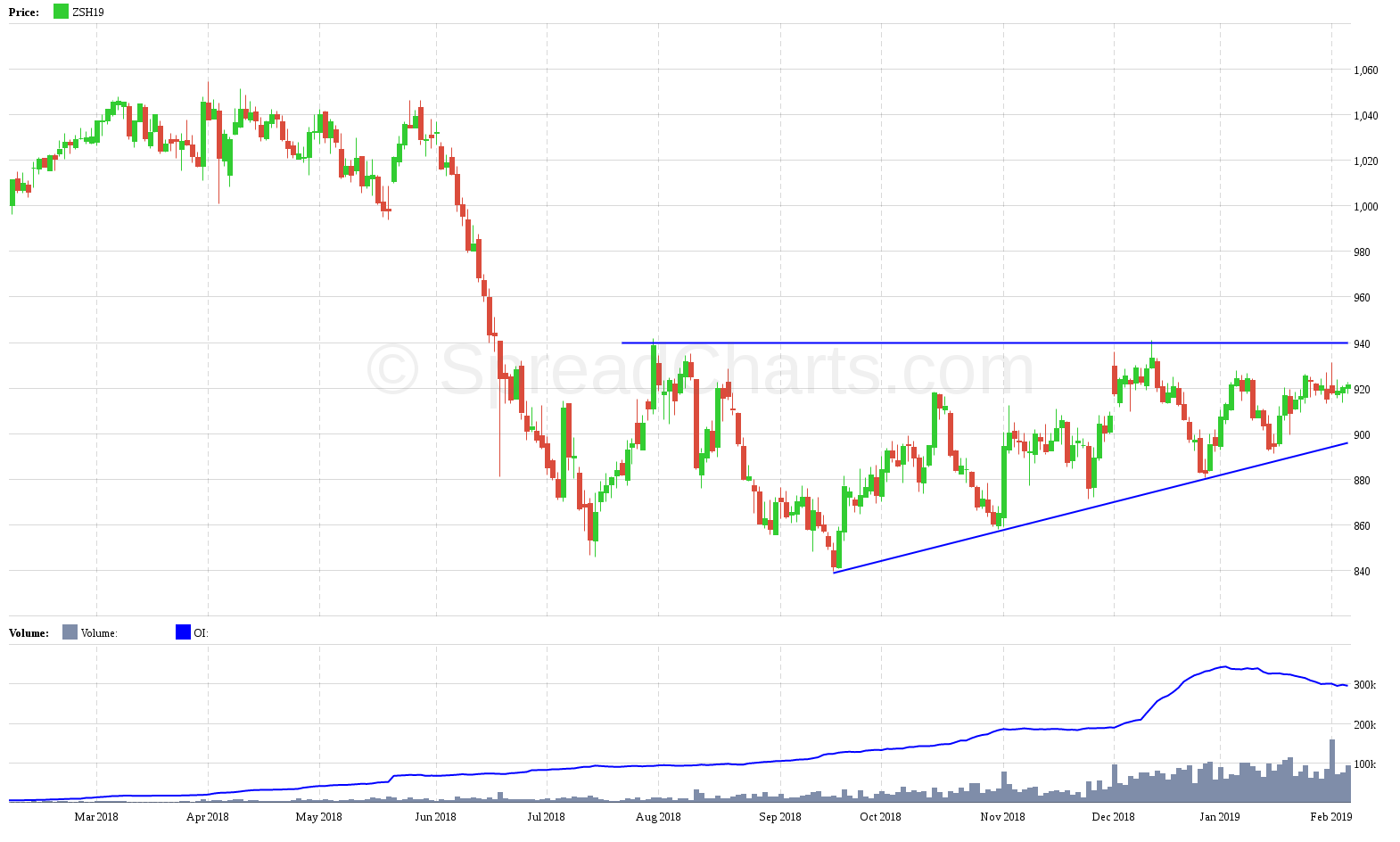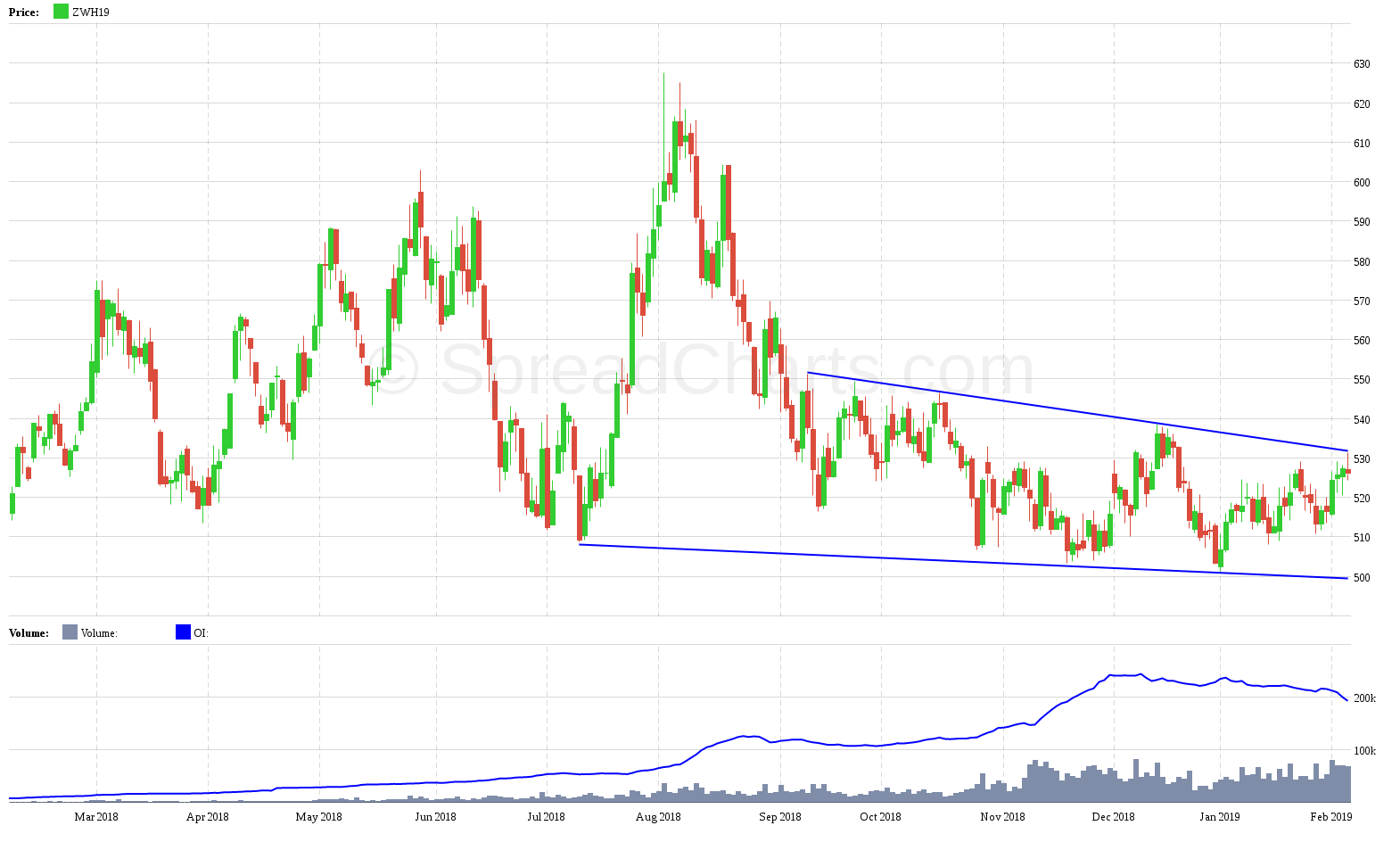The calm in grains will likely end today
Grains have been very calm since the autumn last year. This is not unusual after the American harvest. The weather ceases to have any influence on prices, unless some catastrophic weather hits South America. Demand and especially the exports are the only force left to move the market. However, the decrease in volatility over the last two months is unprecedented even in historical norms. There is basically nothing happening in these markets. Take a look yourself:
What has caused the volatility to dry up? There are three reasons from my point of view:
- Short term agreement between the USA and China – these countries have been recently embroiled in a painful trade war. Fortunately, they have reached a short term ceasefire on the sidelines of the G20 summit in Argentina at the beginning of December. Especially the commitment by China to resume shipments of US soybeans was significant. However, the key message was the reduction in bilateral tensions, and the likelihood of further escalation has fallen sharply. That led to a decrease in volatility as grains have stopped reacting violently to every Trump’s tweet about China.
- Christmas effect – the liquidity over the holidays dries up and trading range tightens. This holiday mood can sometimes stretch over the second half of December. Nevertheless, this effect is only transitory and the cause of no movement in grain prices since the beginning of the year lies somewhere else.
- US government shutdown – this was the main reason for the drop in volatility since the beginning of the year in my opinion. The CFTC has stopped publishing new Commitments of Traders data. That affected many traders who lost an important piece of information about the state of the market. Rising uncertainty leads to an unwillingness to open larger positions in the market. Traders were basically holding back, and that surely dampened the price swings. Besides, we also lost the US Department of Agriculture reports. The crucial January WASDE report wasn’t published, so we lost a critical fundamental data.
Why do I think the volatility is coming back into grains and the price moves will become more significant?
- Temporary ceasefire in the trade war will end on March 1st, 2019. The US and China should come to a more definitive agreement will then. But there is no actual evidence this is gonna happen. In any case, just the approaching deadline will make markets more nervous and the grains can become more sensitive to speculation about trade negotiations. Yesterday’s information that presidents of both countries are unlikely to meet till Mar 1st is a nice example and it sent grain prices immediately lower.
- US government is open. We still don’t have the fresh COT data due to the reasons I have explained in the last article. But the USDA has dealt better with the situation and a crucial WASDE report will get published today. It will also contain the January data besides the scheduled February ones. You can find it here at 12pm Eastern time. We will finally have important information about supply and demand estimates after a long time. And this can cause a significant spike in the market. Keep this risk in mind if you hold a position not only in grains but also for example meats, cotton or sugar.
We will delve into the data from latest WASDE report and assess its impact on grains in the Monday’s Spread report for our premium subscribers.
Check out these great articles as well
New data: Sector indices
Our software is already established well beyond commodity market analysis. Stock indices, currencies, and even...
Read moreWhat’s new in the SpreadCharts app?
It’s been a few months since we launched the new version of the SpreadCharts app....
Read moreA major new version of the app is here
Today, we’re excited to show you the major new version of the SpreadCharts app that’s...
Read moreLiberation Day!
Tariffs are arguably the dumbest part of Trump’s agenda. Yes, the goal makes perfect sense,...
Read more

